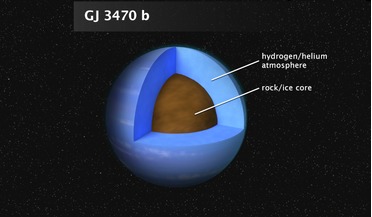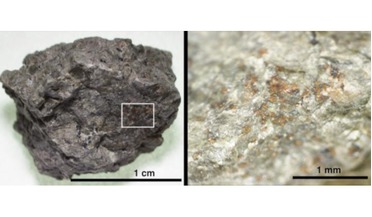 28 September 2016
Yorkshire mines to help shed light on life on Mars
28 September 2016
Yorkshire mines to help shed light on life on Mars
... content of the sample, or the presence of more complex biomarkers. For example, in previous studies, Raman spectroscopy has been used to detect a pigment known as scytonemin, which is produced by a microorganism known as cyanobacteria to shield...
 03 July 2019
New study reveals detailed exoplanet atmosphere
03 July 2019
New study reveals detailed exoplanet atmosphere
... it striking." Clues about the planet's nature and origin have been determined by astronomers using a method known as spectroscopy – the study of the absorption and emission of light and other radiation by matter. This works by studying the...
 29 April 2020
Scientists discover ancient nitrogen-bearing organic material in martian meteorite
29 April 2020
Scientists discover ancient nitrogen-bearing organic material in martian meteorite
... containing nitrogen. Before using a technique called Nitrogen K-edge micro X-ray Absorption Near Edge Structure (μ-XANES) spectroscopy to detect the nitrogen content of the ALH84001 carbonates, the ELSI-JAXA team first plucked off the...
 03 January 2018
Mass of black holes determines star formation history
03 January 2018
Mass of black holes determines star formation history
It has long been suspected that star formation in a galaxy is put to a stop by the energetic radiation from an active galactic nucleus (AGN) surrounding a black hole residing at its centre. However, the mechanisms responsible for this have remained ...
 March 2017
Twinkle - a mission to unravel the story of planets in our galaxy
March 2017
Twinkle - a mission to unravel the story of planets in our galaxy
... will study the atmospheres of at least 100 bright exoplanets in the Milky Way using optical and infrared spectroscopy. The targets observed by Twinkle will comprise known exoplanets discovered by existing and upcoming ground surveys in our...
 November 2017
Roving the red planet
November 2017
Roving the red planet
... list for Spirit and Opportunity was the presence of coarse grey hematite (detected by orbital thermal infrared spectroscopy), a mineral that forms in the presence of water. A gypsum vein observed by Curiosity taken by its MAHLI camera. Martian...